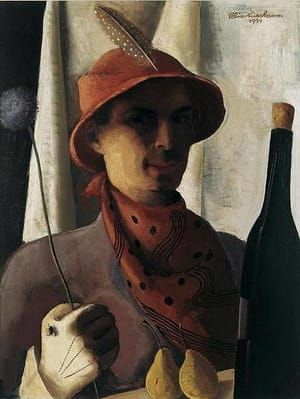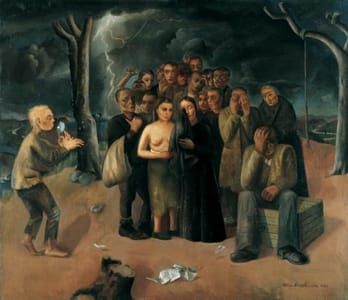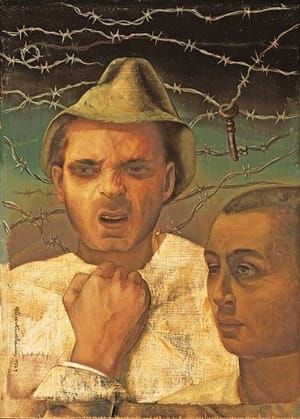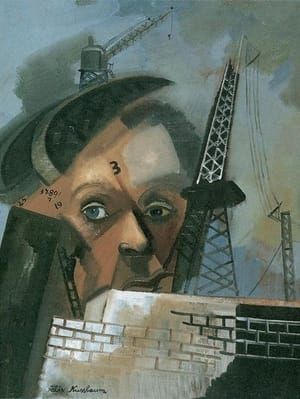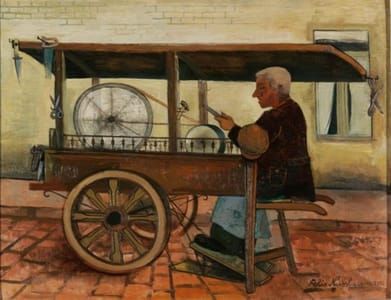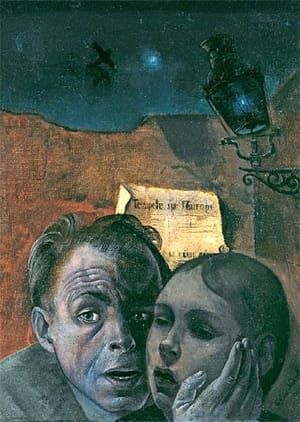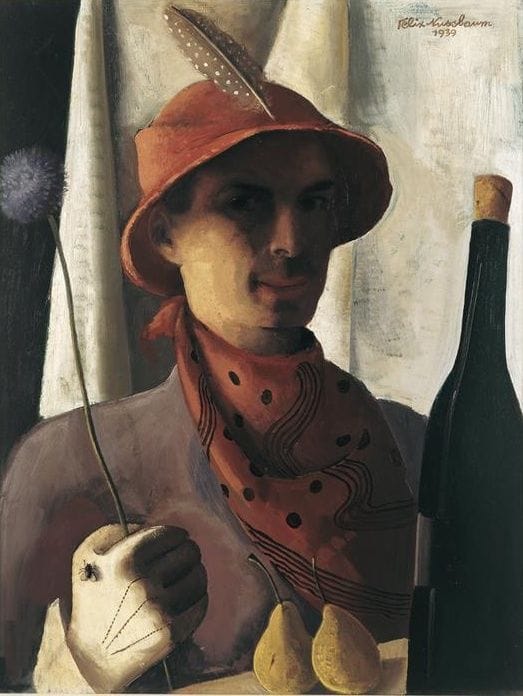

Self Portrait with Scabious Flower, 1939
Felix Nussbaum
...At its best, Nussbaum’s work, much like Libeskind’s, expresses a wide range of 20th-century Jewish experience and emotion. An illuminating, closely argued study that appeared last year from Routledge Publishers, “Pictorial Narrative in the Nazi Period: Felix Nussbaum, Charlotte Salomon and Arnold Daghani” by Deborah Schultz and Edward Timms, explains how Nussbaum retained the identity of creative artist rather than mere historical victim.
...Nussbaum’s constant stylistic experimentations likewise strove for emotional mastery at a time of inhuman stress....
Such enduring primacy of art allowed Nussbaum, as his tragic fate approached, to express complex themes, such as the refugee as escaping trickster, in 1937’s “Man Behind the Window Self-Portrait after Adriaen van Ostade),” or the betrayal of nature inherent in the monstrous rise of European fascism, in 1939’s “Self-Portrait With Scabious Flower.”
[https://forward.com/culture/130576/frum-amid-the-horror/]
© 1939 Felix Nussbaum
Felix Nussbaum
artistArthur
coming soon

